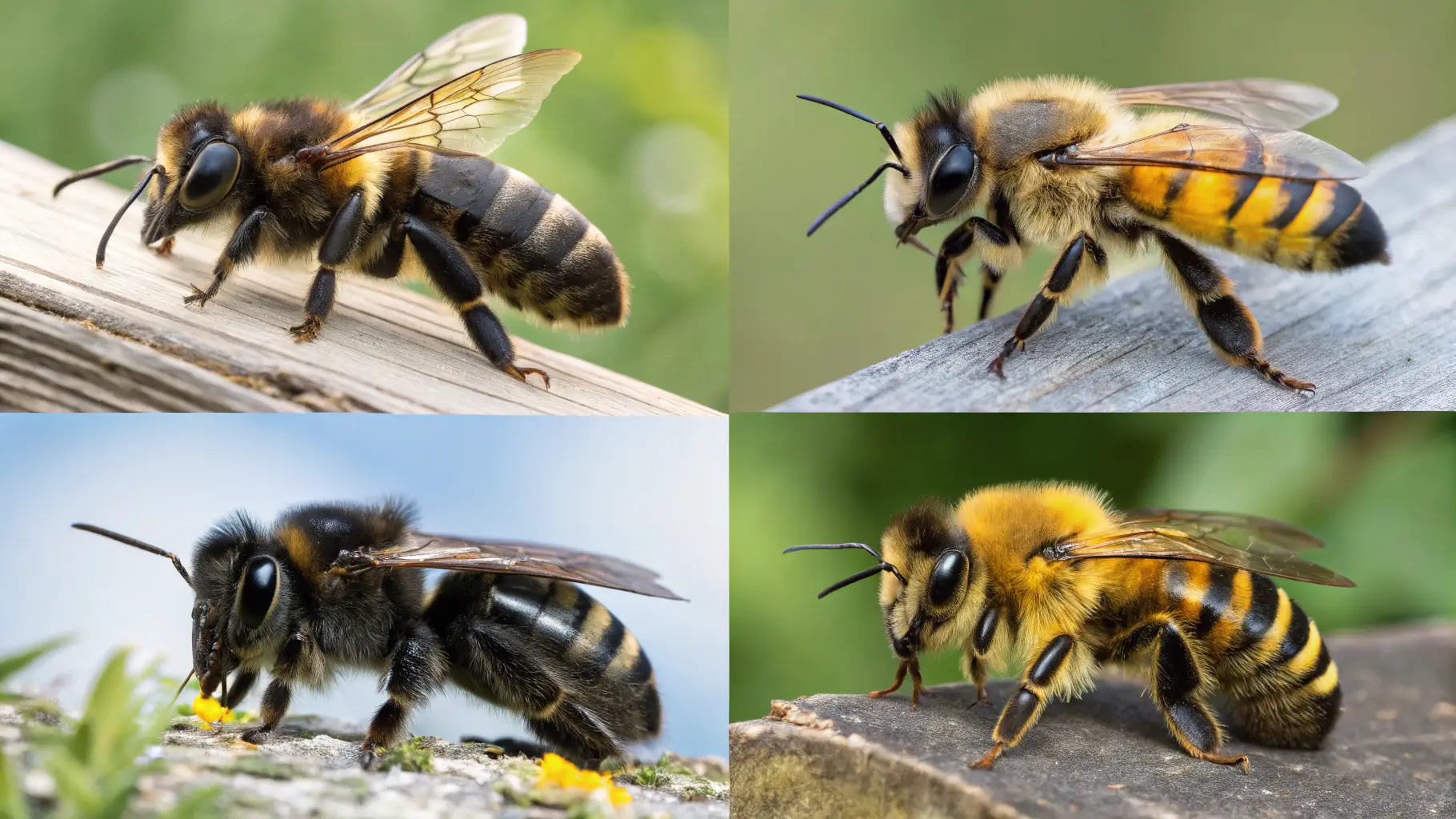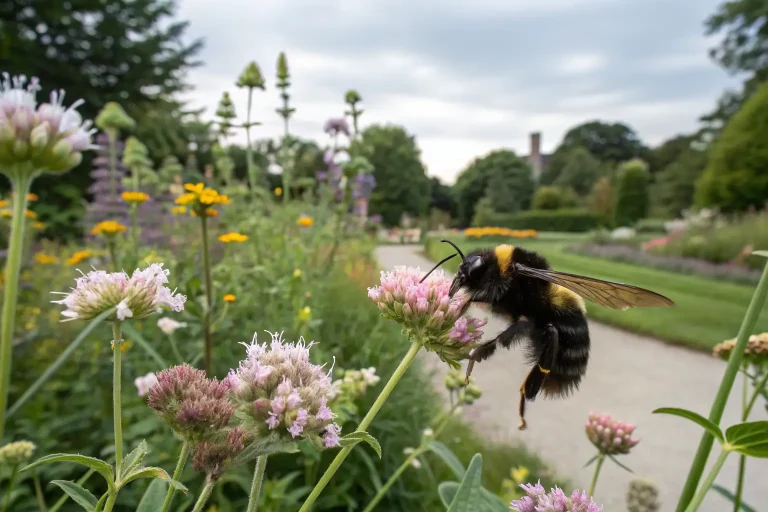Types of Bees: Ultimate Guide to Identification, Behavior & Importance
Did you know that there are over 20,000 species of bees worldwide? These incredible pollinators come in a wide range of shapes, sizes, and behaviors, far beyond the familiar honey bee. Bees play an essential role in our ecosystems, promoting food security and sustaining natural environments. In this detailed guide on the types of bees, we’ll explore the different species, their key features, and why they’re vital to our planet.
1. Bee Classification: Understanding the Types of Bees
Most people instantly think of the European honey bee (Apis mellifera) when they hear “bee.” However, honey bees represent just a tiny fraction of bee diversity. The majority of bees belong to other genera and families, each with unique traits. Let’s explore the types of bees you might encounter.
2. The Big Three Categories of Bees: Social, Solitary, and Cuckoo
Social Bees: Living in Colonies
- Honey Bees (Genus Apis): Honey bees are the most well-known, living in perennial colonies and producing honey. They also engage in the iconic waggle dance to communicate the location of resources.
- Bumblebees (Genus Bombus): These fuzzy bees are larger and are expert buzz pollinators, vibrating flowers to release pollen.
- Stingless Bees (Tribe Meliponini): These tropical bees live in smaller colonies and, unlike honey bees, cannot sting.
Solitary Bees: The Unsung Heroes
While social bees receive much attention, solitary bees are the majority. They create individual nests and do not live in large colonies, yet they’re equally vital for pollination.
- Mason Bees (Genus Osmia): These solitary bees are skilled pollinators, constructing nests in tubes and filling them with mud.
- Leafcutter Bees (Genus Megachile): Known for their leaf-cutting behavior, these bees line their nests with cut leaf pieces.
- Carpenter Bees (Genus Xylocopa): Carpenter bees are large, often mistaken for bumblebees, but they are distinguishable by their smooth, shiny abdomens.
- Sweat Bees (Family Halictidae): Attracted to human sweat, these small bees are often metallic in appearance and nest in bare ground.
- Mining Bees (Genus Andrena): Ground-nesting bees that are crucial for pollinating wildflowers.
Cuckoo Bees: The Parasitic Pollinators
Cuckoo bees are fascinating because they lay their eggs in other bees’ nests. Their larvae then consume the host’s provisions or even kill the host’s offspring.
3. How to Identify Bees: Bee vs. Wasp vs. Fly
Knowing how to differentiate between bees, wasps, and flies can be essential. Here’s a quick comparison:
| Feature | Bee | Wasp | Fly |
|---|---|---|---|
| Body Shape | Rounded, furry | Slender, smooth | Compact, smooth |
| Legs | Thick, hairy | Thin, less hairy | Thin, not hairy |
| Antennae | Long, elbowed | Long, straight | Short, stubby |
| Behavior | Calm, pollinates | Aggressive, predatory | Erratic, non-pollinating |
4. Bee Identification: Key Features to Look For
When identifying different types of bees, pay attention to key features like size, color, hairiness, and nesting behavior. Bees typically have a round, hairy body, whereas wasps have smooth, slender bodies. Some bees, like mason bees, will have pollen baskets on their hind legs.
5. The Global Diversity of Bees
Bees are found across the globe, with unique species adapted to diverse environments. For example:
- Australia is home to the striking blue-banded bees (Amegilla spp.)
- South America boasts large carpenter bees (Xylocopa spp.)
Understanding the diversity of types of bees is crucial to appreciating their environmental importance.
6. Why Bees Matter: Ecological Roles and Importance
Bees are more than honey producers—they’re irreplaceable pollinators. Generalist bees pollinate many plant species, while specialist bees are adapted to specific plants. These bees support healthy ecosystems and food production, from wildflowers to crops. Without them, much of the world’s plant life would struggle to reproduce.
7. Threats Facing Bee Populations
Sadly, bees face several threats, including habitat loss, pesticide use, and climate change. As their numbers decline, it can have ripple effects across ecosystems. Protecting bees is not just about preserving one species but maintaining the entire network of life they support.
8. How You Can Help Bees: Actionable Tips
To help bees thrive, consider taking these steps:
- Plant bee-friendly gardens: Choose native flowers that bloom at different times of the year.
- Provide nesting habitats: Create bee hotels or leave areas of bare ground for solitary bees.
- Reduce pesticide use: Advocate for sustainable farming practices and reduce chemicals in your garden.
- Support local beekeepers: Buy honey from local, sustainable beekeepers.
9. FAQ About Types of Bees
Q: What is the largest bee species?
The giant huntsman bee (Cycloramphus magnus) from Indonesia can grow up to 4 inches in length, making it one of the largest bees.
Q: Do all bees sting?
Not all bees sting. Many solitary bees, like mason bees, are very docile and only sting if threatened.
10. Appreciate the Importance of Bees
From honey bees to bumblebees and beyond, the diversity of types of bees is astounding. By recognizing the value of bees in our world and taking action to protect them, we can ensure that these amazing creatures continue to thrive. Next time you spot a bee in your garden, take a moment to appreciate its role in our ecosystem.


